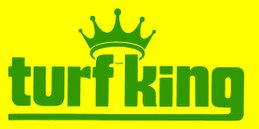Angie emailed about animals digging in her lawn. Here is our recommendation to her.
Angie, Thanks for your response
The digging by animals is a problem. Most likely there are grubs there. There are not insecticides currently allowed for the treatment of grubs. Nematodes can be used in warm weather. (mid Aug to mid Oct). One problem with nematodes is that they may only control 50-75% of the grubs (if we are lucky). Also it does take time for the grubs to die, therefore, sometimes the skunks and/or raccoons may still come for dying grubs or for the ones that were not controlled.
To look on the bright side, the animals digging for grubs are at least getting rid of some grubs. If you could train them to put the sod back after they are finished, we could hire them.!
The grubs do survive the winter. The animals may be back next spring. By the spring, I would not recommend treating at that time. Nematodes could technically be used in the spring once the soil warms up. Even when chemical insecticides were available, I normally did not recommend treating for grubs in the spring.
Reasons for not treating.
1. Most of the damage to the lawn by the grub is done in the fall. Some feeding does occur, but generally it is minimal
2. Spring grubs have now reached close to their maximum size and are harder to kill with insecticides.
3. Even if they could be controlled, the grubs in your lawn are not necessarily the source of the next batch of grubs to invade your lawn. (grubs pupate in May-June, then emerge as adults in June-July. The adults can fly. This means they can go to other lawns to lay their eggs which then hatch into baby grubs.) So even if we got rid of all the grubs in your lawn, adults from down the road, across the street or from a neighbourhood park, may still fly over to your lawn and lay eggs in the soil. Controlling the grubs in your lawn in the spring will mean less adults flying in your neighbourhood, but not necessarily any less eggs laid on YOUR lawn.
What should you do?
Once the animals have stopped coming to your lawn, replace the sod pieces as best you can, (green side up.) Don't do it every morning, because, most likely they will come back and rip up the same piece tomorrow night. At this time of year, it is cool and damp, the sod, if it is still alive, will survive a few days on its back. By waiting you will be less frustrated - hopefully you replace the sod only once or twice.
If the damage is very minimal, sometimes a couple of pieces of sod, may be an easier fix. Do this if sod is available.
In the spring, add some soil as needed, and sprinkle lots of good quality grass seed that is appropriate for the sun/shade conditions of your lawn. If it is both sunny and shady, and you only want to purchase on type of seed, use shady grass seed. Shady grass seed will grow better in the sun than sunny grass will in the shade.
If the damage is very severe, the easiest way to get grass back is to aerate and overseed. Seeds falling in the aeration holes are protected from drying out, and from the birds.
Feed the lawn to help it recover from the damage. Good quality fertilizer is important to help the lawn fill the spaces where the roots have been eaten by the grubs.
Consider doing a nematode treatment for Late August- September to control any grubs from the next generation.


